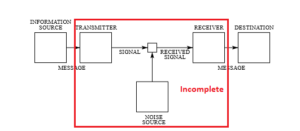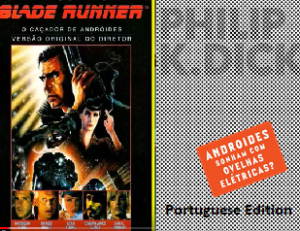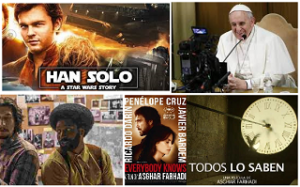
Arquivo para a ‘Tecnology’ Categoria
Butterflie´s effect and the little things
It seems that to change the world to change everything we must do great things, great projects and in fact not really, small things can make a lot of difference, and the first thing we can change is ourselves, according to Plato’s phrase: “if wants to move the world, the first step will be to move oneself. ”
and in fact not really, small things can make a lot of difference, and the first thing we can change is ourselves, according to Plato’s phrase: “if wants to move the world, the first step will be to move oneself. ”
The butterfly effect, researched and defended by Edward Norton Lorenz, who even created the figure to the side, has double meaning first that he discovered that a butterfly’s wing beat could influence the climate, according to which the graph that created this effect physics heat convection model has the shape of the wings of a butterfly.
Lorenz was simulating global climate models on a computer, and executed another model that by removing some houses after the comma the processing time would be shorter and the result quit faster, in practice it slightly changed the process conditions, and the results were quite divergent.
This means in practice that small actions and interventions in phenomena can along a course influence them deeply, which gives us hope because so little that we do correct, honest and ethical inspiration can in the future dramatically change things, Of course, other people will need to do small things.
A personal experience was to lose a loved one by suicide, made me think a lot wondering what could have happened to that person, after much suffering a psychologist explained to me that not only social and emotional but also genetic, physical and emotional factors could determine the action of that person.
Thinking in the positive sense we can make small gestures, a child asked me to play ball with her, I was hurrying, I stopped and I played for five minutes with her, there the neighbor of a building that saw me with a bag in hand, told me can go now I play with the kid (kids in Portugal).
Also thinking about Brazil, the enormous suffering with all negative social and political events, we must try to see small actions that can be done, to make people aware and to listen when someone is very convinced of their point of view.
I see that Portugal left the crisis winning and recovering the optimism as a people, they did not lose hope, although the crisis has reached many people and still there are reflexes, but it is noticeable the improvement.
Oral, written and electronic history of Shannon
There are good reasons for a certain lack of knowledge and criticism, often unfair, to Claude Shannon.
There is a rare interview in July 1982 by Robert Price, curiously called “Oral-History” in which he states:
“Well, back in ’42…computers were just emerging, so to speak. They had things like the ENIAC down at University of Pennsylvania…Now they were slow, they were very cumbersome and huge and all, there were computers that would fill a couple rooms this size and they would have about the ability of one of the little calculators that you can buy now for $10. But nevertheless we could see the potential of this, the thing that happened here if things ever got cheaper and we could ever make the up- time better, sort of keep the machines working for more than ten minutes, things like that. It was really very exciting.
We had dreams, Turing and I used to talk about the possibility of simulating entirely the human brain, could we really get a computer which would be the equivalent of the human brain or even a lot better? And it seemed easier then than it does now maybe. We both thought that this should be possible in not very long, in ten or 15 years. Such was not the case, it hasn’t been done in thirty years.”
The written work of Claude Shannon is well known, it is in his main work Mathematical Theory of Communication, which begins with an article with the same name published in the magazine of Bell Laboratories in 1948, and that has a revised version and corrected in the site of the Department of Mathematics, Harvard.
Finally, the great contribution of Shannon, besides that its presented diagram is always incomplete because they take from him the source of information and the destination of the information, and this makes the information “without signification” and without sense.
But his great contribution is in fact the information in the artifact, what are the limits of “noise” (not only this) but he himself states in his work that he will deal with information in a strict sense, that is, in the artifact
Androids has dreams?
The two films of Blade Runner were inspired by the book Androids dream of electric sheep ? by Philip K Dick is reissued in 50-year commemorative edition (1968-2018) with unpublished writings: a letter from the author to the producers of Blade Runner in which prophesies the success of the production and the last interview granted by Dick, published in 1982 in the journal The Twilight Zone Magazine at the time of the launching of the film.
by Philip K Dick is reissued in 50-year commemorative edition (1968-2018) with unpublished writings: a letter from the author to the producers of Blade Runner in which prophesies the success of the production and the last interview granted by Dick, published in 1982 in the journal The Twilight Zone Magazine at the time of the launching of the film.
The exclusive preface signed by Argentine writer and journalist Rodrigo Frésan, a lover of science fiction and Dick’s work chronicling the troubled and impressive life of the author, and a brilliant scenarios they call “post-apocalyptic” by Douglas Kellner and Steven Best, professors respectively from the University of California and the University of Texas.
Add to this a postface written by the translator of the book, Ronaldo Bressane, who compares Androides with Blade Runner and comments on aspects of the work not explored in the cinema, such as environmental concern, besides the religious and metaphysical questions present in the text.
Religious and metaphysical issues are so current that they deserve an up-to-date view of what we think is our inner universe, our values and our relationship to the natural and yet transcendental world, in the non-immediate sense.
What is nature beyond nature and what is man beyond human is neither trans-nature nor trans-human only, but to look at it properly it will be necessary to have a transdisciplinary look, not to see from the side apocalyptic and pessimistic only.
Artificial Intelligence is undoubtedly an inspiration for the next few years, thinking of it is not thinking outside the spirit and human interiority, but it’s just questioning what it is, Blade Runner 2049 did this, but success was small, we preferred Robocop.
If inner life was reduced in modernity it is not due to current and upcoming advances, but due to the fact that sometimes we attribute to humans robots attitudes and not the opposite, because the current robots still have mechanical reasoning and a limited logic.
Agent environments and an example
The example that Norvig and Russel (2010) will give to describe what an environment in  Artificial Intelligence is happy and unhappy at the same time, happy because it has become something real 8 years after the edition of the book, a taxi as a stand-alone vehicle, and unfortunate because there are already cases of accidents with autonomous vehicles.
Artificial Intelligence is happy and unhappy at the same time, happy because it has become something real 8 years after the edition of the book, a taxi as a stand-alone vehicle, and unfortunate because there are already cases of accidents with autonomous vehicles.
What is called environment is described as PEAS (Performance, Environment, Actuators and Sensors) (figure on the side), whose first stage is to design the task environment.
The agent will be different from a software (a softbot or webcrawler), but it is didactic.
The suggested environment was a stand-alone taxi, which at the time was “little beyond the capabilities of existing technology,” but on page 28 will describe a robot with this function, the fortuitous side of the example as the authors say is a ” completely open” and “there is no limit to the new combinations of circumstance that may arise”. (Norvig, Russel, 2010: 40)
What performance measures will be desired: arrive at the correct destination, minimize the correct destination time, fuel consumption and wear, traffic violations, disturbances and safety to passengers and other drivers, and if there are conflicts make decisions (this is one of the reasons for the accident to protect the passengers caused a hit by a passer-by).
The next step is to map an autonomous car environment, it must deal with a variety of roads, from rural lanes and urban lanes to 3, 4 and up to 5 lanes, with lanes, other vehicles, road works, police cars, puddles, and potholes, and should interact with potential and actual passengers.
Actuators for an automated taxi include those available to a human driver: control over the engine through the throttle and control over steering and braking. some optional choices of communication with other vehicles with arrows and even horn, and with passengers who will need voice synthesizers.
The basic taxi sensors will include one or more controllable video cameras so they can see the road; you can increase them with infrared or sonar sensors to detect distances to other cars and obstacles.
The problems of safety and conviviality with human drivers is evident, but thanks to this example of success made in 2010, today we have maps, GPS, road signs, and many others advances.
NORVIG, P.; RUSSEL, P. (2010) Artificial Intelligence: A Modern Approach 3nd ed., Upper Saddle River, New Jersey: Prentice Hall.
A pause for Cannes
Cannes is not very charming, they say here in Europe, but I disagree when looking at some films that are there, I would say that about 5 people caught my attention, but at least 9 could be watched closely, especially by Brazilians. I read anything about 5 and 4 films I knew.
there, I would say that about 5 people caught my attention, but at least 9 could be watched closely, especially by Brazilians. I read anything about 5 and 4 films I knew.
From the filmmaker Asghar Farhadi (Golden Palm in The Past of 2013, The Apartment of 2016 and the Oscar for Best Foreign Film in 2017), his film name Todos lo saben, set in Argentina and Spain has Latin actors known in Brazil, as Penépope Cruz, Jarvier Bardem and Ricardo Darin.
The second one I think is worth it is Wim Wenders’film Francis: Man of His Word (from films like Wings of Desire, City of Angels and Paris Texas) and the main actor no less than Pope Francisco, I still remember that he made a documentary also about brazilian photografic Sebastião Salgado.
The third, for Star Wars enthusiasts and also for the main actor who participated in the two Blade Runner films, Harrisson Ford who played the role of Han Solo in the original series, but now done by Alden Ehrenreich, still very young when the pilot of Millennium Falcon meets his friend Chewbacca and Calrissian (Donald Glover) well before joining the Rebellion.
According to the news reports of the movies, this one was stuck since 2015, but now appears in Cannes, the Brazilian Cacá Diegues The great mystic circus, which tells the story of five generations of a circus family, with Juliano Cazarré, Bruna Linzmeyer, Antonio Fagundes, Jesuita Barbosa and Frenchman Vincent Cassel, apparently promises, is worth checking.
The fifth and last I make a comment, it’s back the racial question brings back Spike Lee, who tells a real story in Blackkklansman, a black cop Ron Stallworth (John David Washington), who infiltrates the Ku Klux Klan and reaches the lead a local group.
Movies that I have little information but the critics are commenting on are: Under the Silver Lake (by David Robert Mitchell, Bad Current), Fahrenheit 451 (Ramin Bahrani), The House that Jack Built (from the controversial Lars von Trier) and The Man who killed Don Quixote (Terry Gilliam) which brings a repagination of the historical novel Don Quixote.
Today I return to Artificial Intelligence theme.
World created beyond the imaginary
The story of Claude Shannon, who worked in a MIT laboratory of Vannevar Bush and Alain Turing crosses through World War II, while working on secret projects, which were two sides of the same coin, unaware of one another’s project, the idea of passing the language to a human code, the System X that worked Shannon, and the one of Turing that was to decipher the code of the Machine Enigma capture of the German army.
of Vannevar Bush and Alain Turing crosses through World War II, while working on secret projects, which were two sides of the same coin, unaware of one another’s project, the idea of passing the language to a human code, the System X that worked Shannon, and the one of Turing that was to decipher the code of the Machine Enigma capture of the German army.
Not being able to talk about his projects, speaking at lunches and gatherings in Gödel’s Incomplete Theorem, and the idea of creating a machine that could encode human thought, he said in a joke, “could be a mundane brain like that of the president of Bell Laboratories”, place of secret projects in development.
Bell Labs began as an AT & departament in Washington and later of independent labo of the project’s development (photo above).
The major obstacles to innovation initiatives stem from the mental blocks caused by unproven beliefs, prejudices and perceptions about the possibilities of technology, which are not only strongly alienating, but are inhibitors of creativity and can condemn processes of poor mental development. In spite of the irony of Shannon and Turing with the president of Bell Laboratories, there developed from the first valves, the first transistor that was awarded a Nobel Prize, the telephone systems in their most diverse versions arriving the dialed line and the use of the network for transmission over the internet, and the optimal fiber system, whose first test was done in Georgia.
Also lines of radio and television handsets, the development of the Linux precursor UNIX system, the first solar cells, several Nobel prizes and famous students passed by.
The challenge of pioneers is never simple, critics are always willing to devalue the human effort of progress, Bell Laboratories and other study centers, such as CERN and Research Institute around the world, Brazil has some of them as INPE in São José dos Campos, are central drivers of human creativity and project the future of man.
The false technoprofetes
The idea that the machine is evil, besides being an obvious anti-progress conception, seeks without knowing them to disprove Kranzberg’s first law: technology is not good, neither bad nor neutral, but in general, its other 5 laws: 2nd – invention is the mother of need, 3 th technology is developed in “packages”, 4th technological policies are decided, based on non-technical criteria, 5 th. – all history is important, but the History of Technology is the most relevant area, and, 6th. – Technology is a human activity, the History of Technology as well.
seeks without knowing them to disprove Kranzberg’s first law: technology is not good, neither bad nor neutral, but in general, its other 5 laws: 2nd – invention is the mother of need, 3 th technology is developed in “packages”, 4th technological policies are decided, based on non-technical criteria, 5 th. – all history is important, but the History of Technology is the most relevant area, and, 6th. – Technology is a human activity, the History of Technology as well.
Jean-Gabriel Ganascia, in his book “The Myth of Singularity: Should We Fear Artificial Intelligence?” (Lisbon: Círculo de Leitores, 2018) unmasks the idea that in the foreseeable future, some mark the year 2045 as machines can come forever completely autonomous and replace the human intelligence that ultimately is what programs and governs.
He quotes among several others who believe in this prophecy, whose point of overcoming is called the point of singularity, Raymond Kurzweil, that part of his precocious genius, at the age of 15 wrote a program that scores piano music, prepares his body and his mind to be “Loaded” (a cybernetic download) on a future machine.
Another technoprofetes quoted by Ganascia is Hans Moravec, who wrote “Men and Robots: The Future of Human Intelligence and Robotics” (1988) and “Robot: More Machines to Transcendent Mind” (1998) that would lead to a radical transformation of humanity.
One last, quoting quote, Kevin Warwick wrote I, Cyborg in a clear allusion to Eu, Robot, and who became known to the public for introducing a chip encapsulated in a skin into the skin to command a series of actuators remote, but it seems that his project was a failure, says Ganasci (page 13).
Philosophers do not stand still, I leave aside here the critics of the current digital technologies, to go to futurist technoprofetas, worthy of mention and quoted by Ganascia, Nick Bostrom, training physicist, makes prophecies in his writings, and particularly a sales success :
Superintelligence: Paths, Dangers, Strategies, predicting among other things the trans-humanity.
Among the catastrophic technoprofetes, Ganascia quotes Bill Joy, co-founder of Sun Microsystems, who wrote an article: “Why the future does not need us,” the author goes from Leibniz to Lyotard to show why these theses seem real in our time , but not in the studies and results of Artificial Intelligence.
They are indeed technoprocesses, but out of time, the time of oracles and prophets is of orality.
Oscar 2018 without surprises
Dunkirk took 3 statues, the best actor and best actress winners were Gary OldmanBest animation for Viva la vida, I did not like it. (The Destiny of a Nation) and Frances McDormand (Three ads. for a crime).
(The Destiny of a Nation) and Frances McDormand (Three ads. for a crime).
My favorite Blade Runner 2049 took two statuettes (Best photography and visual effects), as well as “Three ads for a crime”, the Chilean film “A fantastic woman” with Daniela Veja was the best foreign film.
After 14 nominations, the cinematographer Roger Deakins finally at age 68 earned his first statuette.
Actress Frances McDormand was responsible for the most political word: “We all have a story to tell. Let’s talk about our projects, which need funding. We have to have inclusion”, referring also to his poster movie of a mother asking that the crime that killed her daughter be cleared.
Another appeal was the best director’s winner, Guilhermo del Toro, Mexican, spoke about the importance of “erasing the frontiers” direct allusion to Donald Trump.
Best animation for Coco (in portuguese The life is a party), I did not like it.
Jordan Peele became the first black man to win the Original Screenplay Oscar in “Run.”
What is the evil of our time?
Modernity is in crisis, and it is not due to technology and new media, since the process has long been detected by thinkers, sociologists and social scientists; and point is not the central cause even if it influences the crisis.
process has long been detected by thinkers, sociologists and social scientists; and point is not the central cause even if it influences the crisis.
One of the authors who points out this crisis is Domenico de Masi, a 79-year-old writer, professor at the La Sapienza University in Rome, he talks about a disorientation, his latest book “Alphabet of the Disoriented Society” (Brazilian edition: Objetiva) reached Brazilian bookstores in 2017 , he became famous for his book “Creative Leisure.”
In his previous book, “The Future Has Arrived,” he says that society’s current sociological model is missing as a reference, it is interesting to note that this reversal of the ideologies of the previous century reveals exactly this , the binary model of understanding that we either go to utopian socialism or to capitalism in the period of Adam Smith’s “Wealth of Nations.”
From his previous book I take an analysis that I consider important, where it says that the lack of reference made society unable to distinguish between what is beautiful and what is ugly, what is true and what is false, what is good and what is bad, what is right and what is left, and even what is alive and what is dead, we may understand the wave of “zombies” and the post-truth there.
To point out what the author thinks of the future, he points out a series of “sociological acupunctures”, some significant aspects of our society, and explores twenty-six, which in my view is too much and can somehow confuse.
He himself makes a synthesis by pointing out the factors that were “solid” (concept that I attribute to him in terms of the Baumanian liquid), industrial society (1750-1950), namely: rationality, speed, efficiency, standardization, consumerism and chauvinism.
It shows how problems such as concentration of income could be solved from a view of wealth produced, according to the author’s data the world grows 3 to 4% year, and already produces, 65 trillion dollars a year, and using a UN report about human development, would be enough to 100 billion dollars a year to end hunger in the world.
It points to enigmatic visions of society, like loss of privacy (according to him, it will be impossible to forget, get lost, get bored and isolate), and we will be able to avoid genetic diseases (very unrealistic at least until now), and do technology for many of our ills: affective robots (using Artificial Intelligence), 3D printers that would replace industrial machines.
Although it appeals to subjectivity, in the old dichotomy between subject and object, it does not yet see the question of Being that can only be solved with the presence of another Being, according to the analysis of the existential-ontological thinking currents, to replace it artificially does not seem to me solution.
But it’s worth the most of Seneca who likes to use: “No wind is in favor of the sailor who does not know where to go.”
Princess Leia: Back to the Future
I know, it’s two distinct films, but Brigham Young University (BYU) seems to return to the path of broadcasting and projecting 3D holographic images into the air.
path of broadcasting and projecting 3D holographic images into the air.
“Our team’s mission is to make the 3D holograms of science fiction a reality,” said Daniel Smalley, a professor of computational engineering and computer science, a holography expert who recently published an article in Nature magazine.
The technique he developed is based on the phenomenon of photophoresis, in which particles suspended in the medium of a gaseous liquid (there are experiments with droplets of water that forces it to be sucked into the air), it can be the particles that are in the air, which need to be moved by thermal gradients and can be done by laser beams, explains Smalley, “these screens are capable of producing images in a ‘fine beam’ that are visible from any direction and are not subject to cutouts,” ie seen from any position of the viewer.
The technical name of this effect is more precisely: “photophoretic-trap volumetric display”, and is superior to old techniques that could not capture light through the air to create a virtual object with the same notion of depth as the actual object.
But the most spectacular is the possibility of RGB projection (Red-Green-Blue, the three primary colors that composed were the visible spectrum by the human being) as the point of light is able to move quickly and thus the point of light produces the color, the projection of the green, red and blue laser radios produce the visual effect of the color.
The color image in three-dimensional volumetric (3D), will have the resolution of 10-micrometer (10 ^ -6 of the meter or 10 ^ -4 of the centimeter), this means to produce 10 thousand voxels (Pixels volumétricos) by centimeter or one million by meter cubic.
In a short time the communication has changed, in 10 years we have spoken through the Web in visual interaction, thanks to VoIP (voice over Internet), now the volumetric interaction in holograms, or also, to watch images of objects and people around us that are thousands of miles of distances, or simply in filming from other times, we are back in the future.

